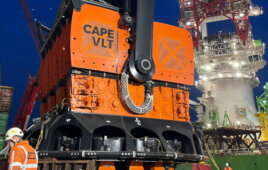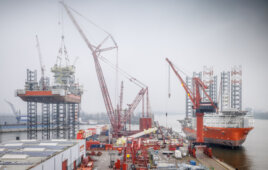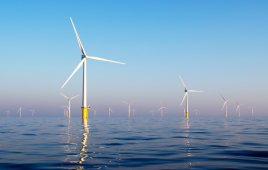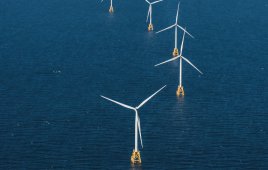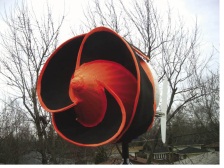
Improved energy capture comes from the shrouded design, an established aircraft principle, says inventor Joel Neumann. In addition, should a bird fly into the turbine, it is more likely to be ejected alive rather than harmed.
A turbine rotor designed for use in slow moving creeks, streams, rivers, tidal flows and ocean currents (no-head water) has shown promise as a rotor for wind turbines. Inventor Joel Neumann, Palatine, Ill, says that in wind-tunnel model tests the 7-in. diameter BNBES turbine equaled a 12-in. two bladed standard design in stall torque. The B N Balance turbine is now scaled to a 3-ft diameter and shows efficiency improvements over a conventional three-blade rotor of the same size. The BNBES turbine sports other features, such as being made from inexpensive materials that would be creature friendly. “Birds or bats that might fly into the rotor would not find themselves injured because of the relatively soft materials, neoprene and so forth,” says Neumann. “Indications now are that it may be completely wildlife friendly because of the soft materials and a design that allows for ejection over chopping,” he says.
Neumann acknowledges that the turbine differs from conventional designs and results will probably be questioned. “Still, the results indicate about a minimum of 35% more energy captured on both model and field tests, and a greater theoretical potential when fully optimized,” he says. Furthermore, calculations performed by members of the engineering department at the Northern Illinois University agree with his predicted results.
One reason for the improvement is that the design uses 100% of its diameter. The blades on a conventional turbine, in contrast, occupy only about 15% of the swept area. In contrast, wings on the new design are self-shrouding and flexible to conform to variable wind speeds. He says it is almost silent in 30 mph wind, the highest speeds during current field tests.
The turbine also works well in winds that are not head-on. “For instance in a field test, gusts up to 30 mph and 90° to in-flow spun the turbine with a generator at 100 rpm, so we believe the design could withstand 90 mph winds while continuing power production. WPE
Filed Under: News

